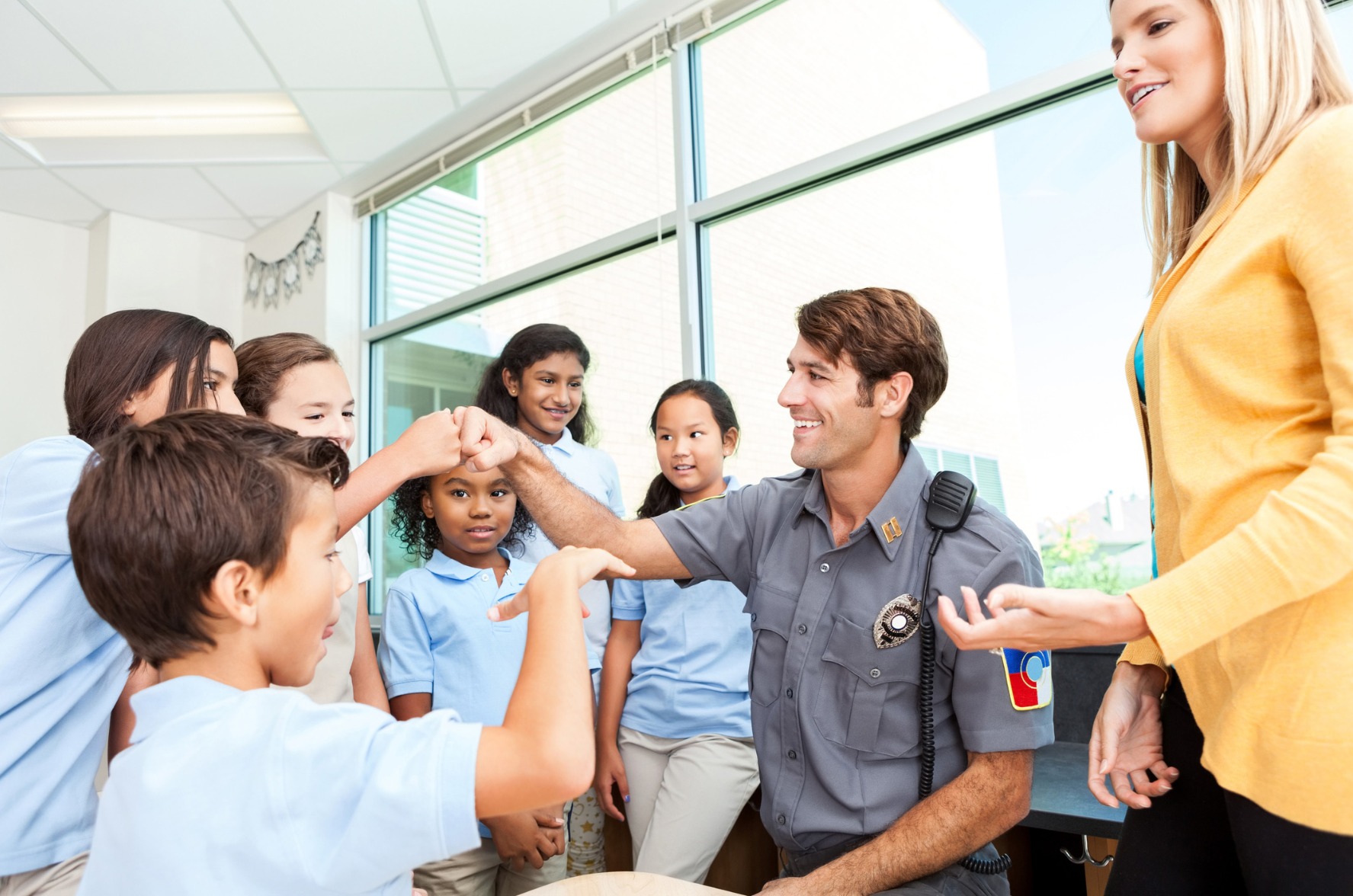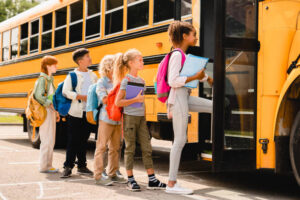Resources

Safety Plan for Students: A Complete Guide for Schools & Parents
Introduction
The safety of students is one of the most important priorities for parents, educators, and school administrators. Whether it’s physical security, online protection, or mental health, every child deserves to feel safe in learning environments. A student safety plan serves as a roadmap that prepares schools, families, and communities to prevent risks, respond to emergencies, and foster a culture of safety and well-being. For a practical overview of prevention strategies, the SchoolSafety.gov Back-to-School Tip Sheet offers valuable guidance for integrating safety into everyday school operations.
In this guide, we’ll explore what a safety plan for students includes, why it’s important, and how to implement one effectively across schools, classrooms, and homes.
What is a Student Safety Plan?
A student safety plan is a structured framework designed to protect students from harm and prepare them to respond to potential risks. An effective student safety plan covers:
- Physical safety: Fire drills, lockdown procedures, and evacuation plans.
- Mental health & well-being: Support systems for stress, bullying, or trauma.
- Digital safety: Guidelines for responsible online behavior and cyberbullying prevention.
- Emergency preparedness: Steps to follow during natural disasters, medical emergencies, or crises.
A comprehensive student safety plan goes beyond emergency response—it proactively identifies potential risks, implements preventive measures, and fosters a culture of vigilance and care throughout the school community. Its purpose is to reduce harm before it occurs and to equip students with the awareness, confidence, and practical tools they need to protect themselves and support others in times of crisis.
Why Student Safety Plans are Essential
Safety plans are more than compliance documents — they save lives. They provide a proactive framework for preventing harm, coordinating emergency response, and ensuring that every student, teacher, and parent knows exactly what to do when seconds matter. Here’s why every school and parent must prioritize them:
- Preparedness reduces panic: Clear procedures help staff and students stay calm during crises.
- Protects physical & emotional well-being: Plans address both physical security and mental health.
- Compliance with regulations: Many states in the U.S. now require safety protocols and panic button compliance by 2026 – Alyssa’s Law.
- Trust & accountability: Parents feel reassured knowing schools have structured safety systems.
- Empowers students: Kids who know what to do feel safer and more confident.
According to the National Center for Education Statistics, schools with structured safety plans report fewer incidents of violence and improved student well-being.
Core Elements of a Student Safety Plan
A well-designed student safety plan is built on a set of foundational elements that work together to prevent threats, guide emergency response, and promote a secure, supportive learning environment:
- Emergency Response Procedures
Every school should have clear step-by-step protocols for:
- Fire evacuation
- Earthquake, tornado or other natural disaster response
- Lockdowns resulting from serious threat scenarios – active shooter or armed intruder
- Medical emergencies (asthma attacks, allergic reactions, injuries)
Ready.gov School Safety Planning is a great resource to reference in planning
- Crisis Communication Systems
In a crisis, every second counts. Effective plans include:
- Automated alert systems for staff (and parents)
- Intercom or PA announcements
- Tools for different staff roles
- Delineation of different alerts
- Real-time situation awareness and coordination for administrators
- Communication to first responders
- Student Mental Health & Counseling
Safety is more than preventing accidents — it’s also protecting students’ minds. Plans should provide:
- Access to school counselors
- Anti-bullying initiatives
- Stress management workshops
- Safe spaces for students experiencing anxiety or trauma
American School Counselor Association provides comprehensive best practices that your district or school can adopt.
- Digital & Cyber Safety
As students spend more time online—whether for learning, socializing, or exploring—school safety plans must evolve to address digital risks with the same urgency as physical ones. Safety plans must cover:
- Responsible social media use
- Cyberbullying prevention policies
- Strong password management
- Safe browsing guidelines
Resources like StopBullying.gov offer practical tools for educators and families to help students navigate online spaces safely, confidently, and respectfully
- Community & Parent Involvement
Parents and local communities are partners in school safety. Plans should encourage:
- Parental or PTA input in creation of student safety plans
- Parent workshops on home safety practices
- Community emergency drills
- Volunteer programs for event supervision
- Training & Drills
Regular practice builds muscle memory by reinforcing instinctive responses and reducing hesitation during high-stress situations. When safety procedures are rehearsed consistently, they become second nature—allowing students and staff to act swiftly, calmly, and effectively when every second counts. A good plan schedules:
- Regular fire drills
- Quarterly lockdown or shelter-in-place drills
- Annual full-scale safety rehearsals with emergency responders
Building a Safety Plan for Students-Step by Step
Creating an effective student safety plan requires a clear, structured approach that brings together school policies, community input, and practical procedures tailored to real-world risks. Below steps provide an effective framework for building a student safety plan:
- Risk Assessment – Identify potential threats (natural, digital, social, or health-related).
- Policy Creation – Define rules and expectations for safety inside and outside classrooms. Obtain input from key stakeholders.
- Emergency Contacts – Maintain updated parent and guardian contact lists.
- Clear Roles – Assign staff members to safety responsibilities (first aid, evacuation leaders, communications).
- Student Involvement – Educate students on what actions to take during different emergencies.
- Monitoring & Updates – Review and revise the safety plan every school year.
Safety Plan at Home- A Parent’s Role
Parents can extend school safety practices into the home by:
- Teaching kids how to dial emergency numbers
- Establishing family meeting points during crises
- Setting screen-time rules and online safety guidelines
- Having a first-aid kit and fire extinguisher at home
- Talking openly about mental health and stress
American Red Cross Family Safety Tips is a useful guide for parents.
Common Challenges Schools Face in Implementing Safety Plans
Implementing a student safety plan often reveals practical and systemic hurdles that schools must navigate to turn good intentions into effective, lasting protections:
- Resistance to frequent drills (“students get scared or bored”)
- Limited budgets for technology and training
- Inconsistent communication with parents
- Overlooking digital safety and mental health in planning
The solution is balance: Safety plans must be practical, consistent, and holistic.
Future of Student Safety Plans
By 2026, most U.S. states will require panic button systems and enforce stricter safety compliance standards—marking a nationwide shift toward proactive school protection. Schools that embrace technology-driven solutions now will lead the way in:
- Real-time emergency coordination
- Faster response times
- Deeper community trust
Safety plans are no longer static documents filed away in binders—they’re evolving into dynamic, interactive systems powered by smart alerts, integrated communication tools, and data-informed decision-making.
Conclusion
Creating a safety plan for students is no longer optional — it’s essential. From physical drills and emergency response to digital safety and mental health, schools and parents must work together to ensure every child feels secure.
A strong plan builds trust, confidence, and resilience. And most importantly, it saves lives.
SimulAlert’s Every Second in Mind® approach equips schools to act with confidence—for effective emergency alert and response.
Are you exploring safety systems for your school/district?
Click here to schedule a SimulAlert® demo.



